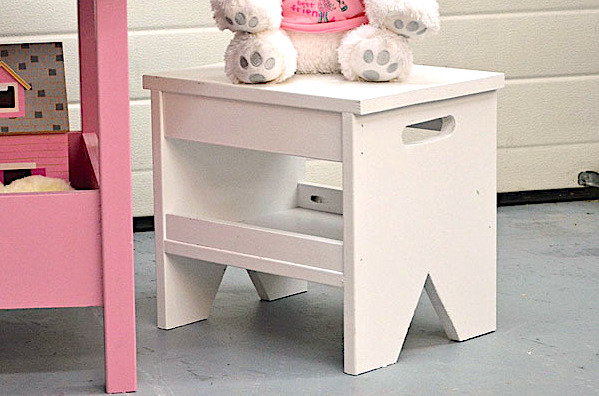
Perfect for a play table or extra seating and storage, this little bench is easy to make, easy to move around, and versatile! This is an easy build. Free step by step plans from Ana-White.com
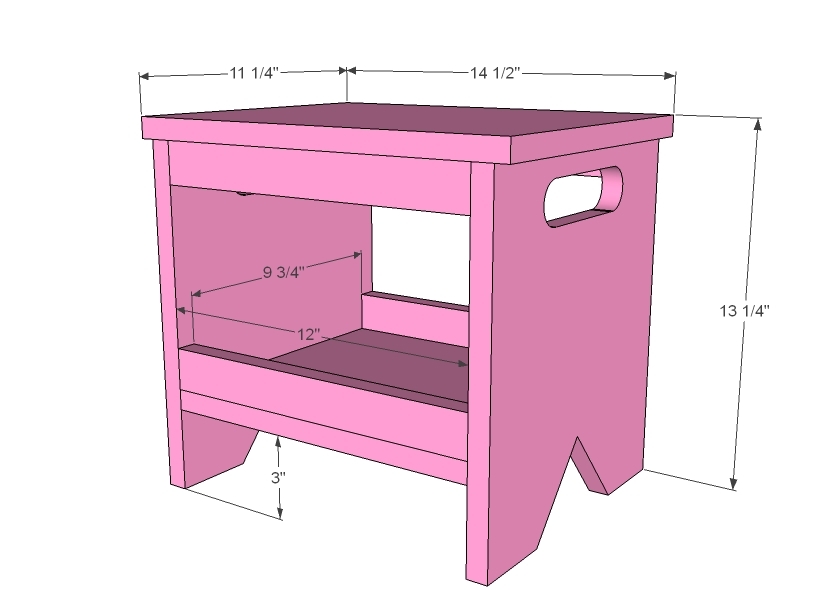
Preparation
- 1 - 1x12 @ 5 feet long
- 1 - 1x2 @ 5 feet long
- Use 2" self tapping star bit screws or 1-1/4" nails or 1 1/4" pocket hole screws
- 2 - 1x12 @ 12 1/2" - sides (cut to 17" for a standard seat height)
- 1 - 1x12 @ 14 1/2" - top
- 1 - 1x12 @ 12" - shelf
- 4 - 1x2 @ 12" - trip
Please read through the entire plan and all comments before beginning this project. It is also advisable to review the Getting Started Section. Take all necessary precautions to build safely and smartly. Work on a clean level surface, free of imperfections or debris. Always use straight boards. Check for square after each step. Always predrill holes before attaching with screws. Use glue with finish nails for a stronger hold. Wipe excess glue off bare wood for stained projects, as dried glue will not take stain. Be safe, have fun, and ask for help if you need it. Good luck!
Instructions
Step 1
Step 2
It is always recommended to apply a test coat on a hidden area or scrap piece to ensure color evenness and adhesion. Use primer or wood conditioner as needed.











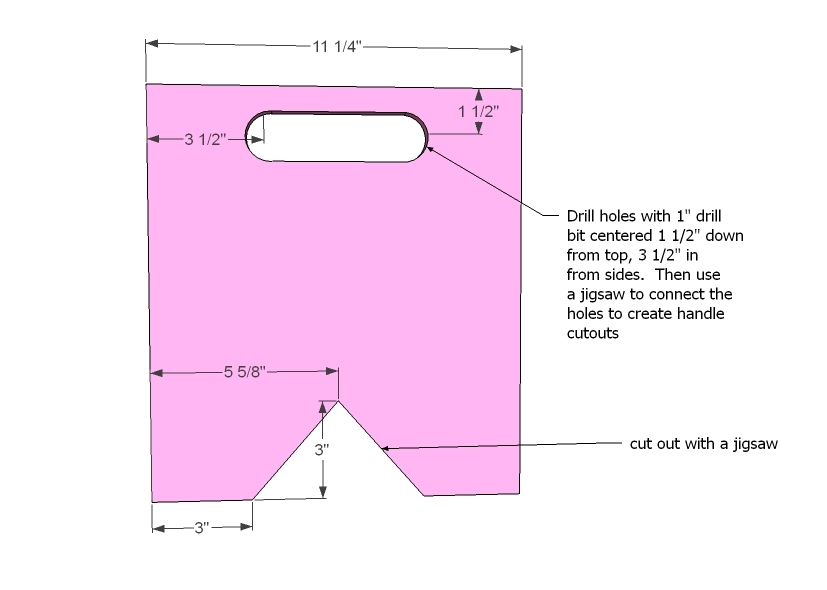
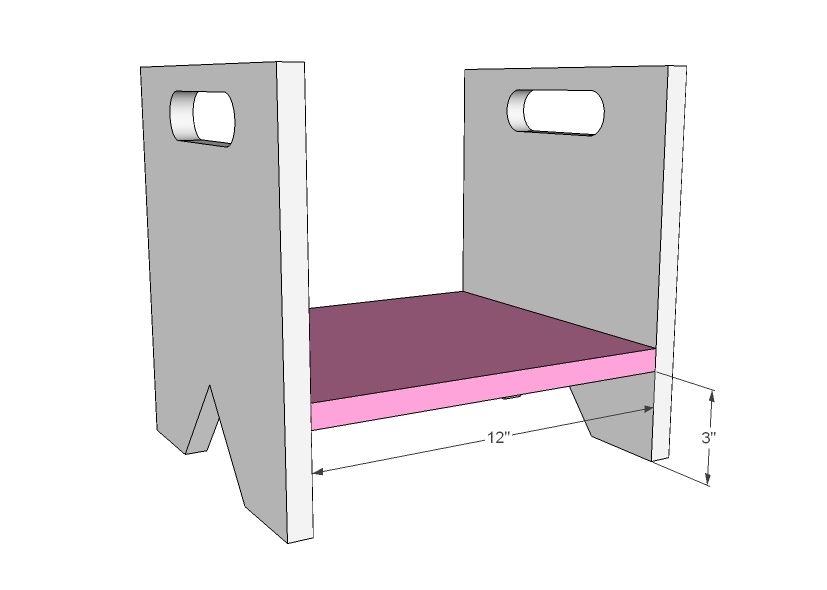
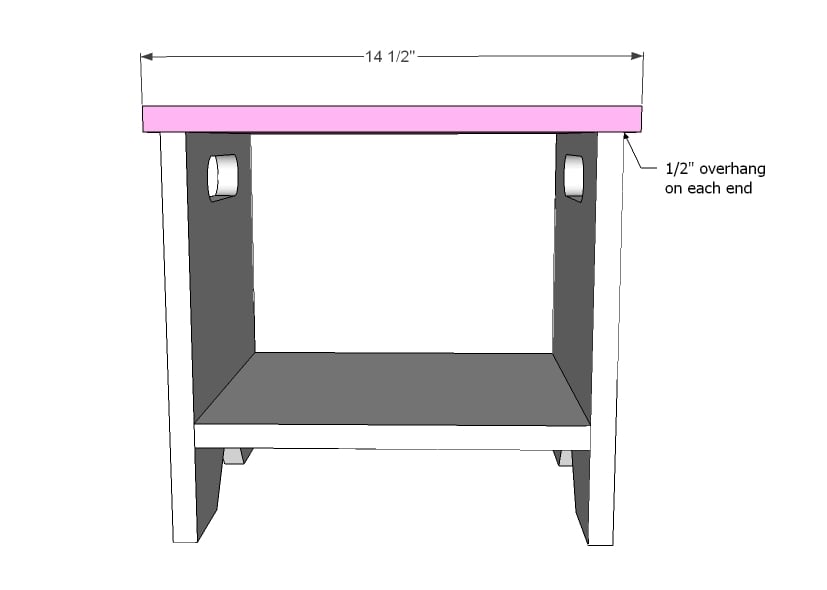
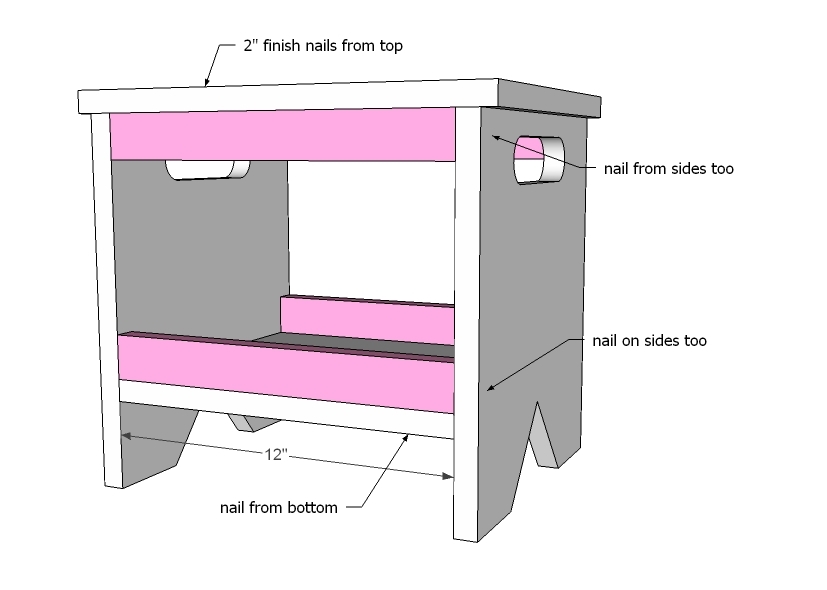
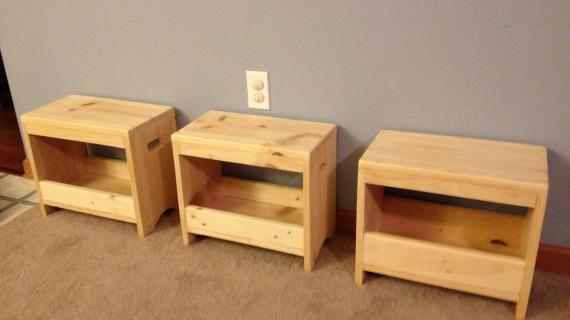
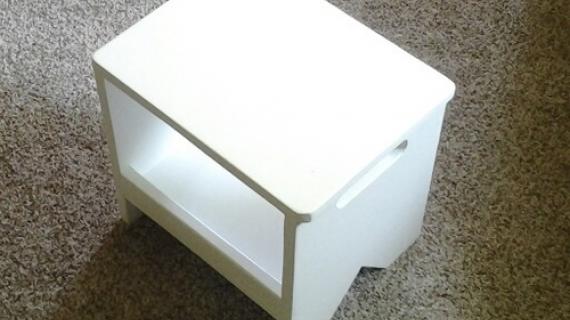

Comments
annalea
Thu, 12/29/2011 - 14:36
Perfect. :o)
I think we might make a bunch of these, since they look like they'll not only store well in deep cupboards we have, but will work as storage, too, with that great little shelf. Thank you!!!
Sandy Mayer (not verified)
Thu, 03/15/2012 - 15:37
Great design - it's quick to
Great design - it's quick to make and modify. We changed the dimensions and used this stool design to make a really basic night table.